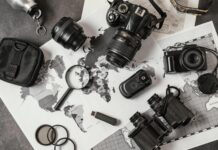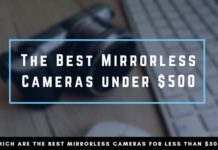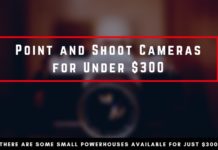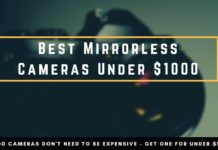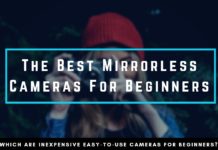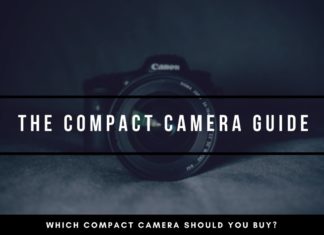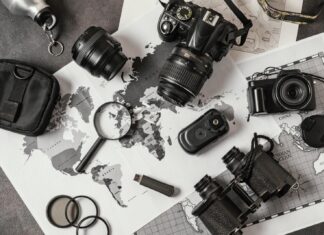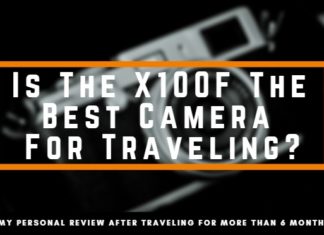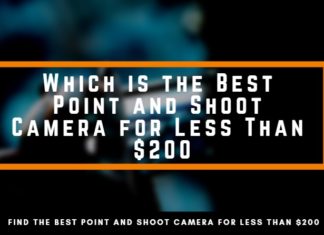Fuji X100F – a Top Contender for Street Photography?
The Fuji X100F is the successor of the X100S which was already a huge success amongst Street Photographers. It combines lightweight and a fixed focal length with a reasonable price, while still producing professional level images. Unlike the big rigs from Canon or Nikon, the X100 series isn’t very versatile in its functions, but it is geared towards Street / Documentary / Travel Photography. It is ideal for people that take their camera everywhere and want to photograph anytime they want. The size and appearance of the Fuji X100F are also less intimidating compared to any big DSLRs, which makes it a lot easier for us Street Photographers to take images in public without getting weird looks for being a professional paparazzi.
Check out this street photography camera guide for a comprehensive overview of current Street Photography Cameras
Personally, I never used the X100S but the RicohGr was my steady working horse. The Ricoh did a great job and served me well, it wasn’t really that I needed a new camera, but I was interested in testing the 35mm equivalent lens and working with a viewfinder again. Only using the LCD screen on the Ricoh can take some of the fun that is arranging an image through the viewfinder which is the main reason I decided to go for the Fuji X100F.
Description
The Fuji X100F embraces a 24 megapixel CMOS-III sensor. The same that is also used in the more advanced X-Pro series. In comparison to its predecessor, the new sensor is the biggest change. In contrast to the older ~16-megapixel CMOS-II sensor, the new generation doesn’t use a low-pass filter anymore. Before the Fuji cameras were kind of known to produce a very “wax-like” skin due to the filter being applied on the sensor level. In the newest generation, they abstained from this sensor, making the images a lot sharper and a good picture overall. This may be an unfamiliar look for the trained eye if you used the X100S for a very long time.
In general, the images will be sharper due to the lack of filter being applied (with all its advantages and disadvantages). Think about it like the change from standard resolution TV to HD-TV. Because the picture got a lot sharper they have to use new makeup and take special care of any distraction. The same applies to the new sensor generation.
When you are mainly shooting portraits, you might need to put more emphasis on the post-processing. On the other hand, in ideal situations, the images will be sharper and profit from the new sensor generation.
The lens didn’t change at all and still is a 23mm (35mm full-frame equivalent) fixed focal length. As is characteristical for the X-series the lenses also aren’t changeable. Nonetheless, there are converters available to change the 35mm to 50mm if you like to do so. The 24-megapixel sensor also allows for a more creative cropping of the images.

The Purpose of the Fujifilm X100F
Where does the Fujifilm X100F fit in between the DSLRs of Canon & Nikon and the new mirrorless generations of Sony & Olympus?
The Fuji X100F, in my opinion, is ideal for everyone who wants a small compact camera that combines the image quality of professional cameras with relatively lightweight and an impression of classic analog cameras. As a Street Photographer, these are qualities that I really care about, more than how much autofocus points the camera has or if the ISO noise at 800 is 1% less distracting.
With regular DSLRs, you have the problem of looking like a professional photographer on the street. This leads to people noticing your camera very early on and you won’t get any candid shots since most people will behave differently when thinking they are being photographed by a professional paparazzi. Unfortunately, behavior like this destroys the purpose of Street Photography and capturing candid moments.
Therefore the Fuji X100F is a perfect fit for Street Photographers and reportages. It doesn’t intimidate other people while providing a great image quality. The single fixed lens design might be a little off-putting if you worked with zoom lenses before, but you will get used to it very quickly. Due to the non-changeable focal length of 35mm, the camera will hardly be useful for wildlife or sports photography, but other than that the 35mm is pretty versatile.
You can shoot weddings as well as portraits and with an open aperture of 2.0, you are able to create a very narrow depth of field for portraits.
The Fuji X100F and Street Photography
Now I want to share my personal experiences shooting with the X100F on the street for over 2 months now. Most of these thoughts are in comparison to my previous owned RicohGr which is also quite popular in the Street Photography world. Why did I choose to go for the X100F?
The biggest reason to go for the Fuji X100F was the viewfinder. If you aren’t familiar with the RicohGr, then you have to know that it is a compact camera that only provides an LCD screen. You can purchase an external viewfinder, but it still isn’t the same.
With the Fujifilm X100F I have the comfort of choosing either the Optical or the Electronic Viewfinder (EVF). Although the Optical Viewfinder doesn’t show a “real preview” of the image since there is no mirror to connect the Viewfinder with the optical image reaching the sensor. Therefore the optical viewfinder is mainly for framing the picture, but you are also able to display additional information from the EVF like focus peaking.
Personally, I use the optical viewfinder for Street Photography since I am very familiar with the exposure settings and use zone focusing most of the time. Due to the experiences with the settings, I don’t need to rely on the viewfinder to expose my picture correctly or get the focus right. The optical viewfinder gives me the “old” feeling of framing my pictures through my camera and allows me simultaneously to add the advantages of the EVF information in a corner display. The EVF is also great when you want to photograph a lot of dark shades to embrace negative Space in your Photography, as you can adjust the brightness pretty flawlessly. In the same vein, the X100F is also great for Night Street Photography as the EVF can compensate the darkness.
For more difficult shots like weddings or portraits, I use the EVF only. It gives me more security to see exactly how the image will turn out in the EVF when working with a narrower depth of field and more difficult light settings in buildings. In the Fuji X100F, the EVF is very advanced and doesn’t feel laggy or shaky like in early mirrorless cameras.
One battery charge lasts me about two hours when using the “power” mode, which means that the camera stays on for the whole duration and doesn’t drop into a standby mode. The amount of pictures doesn’t really affect the battery life so you don’t need to worry about draining the energy with the burst-mode. I’d recommend you to buy some additional 3rd party batteries.
You also don’t need to worry about rain or other influence as I have used it in rough conditions before and so far the X100F proves to be pretty resilient.
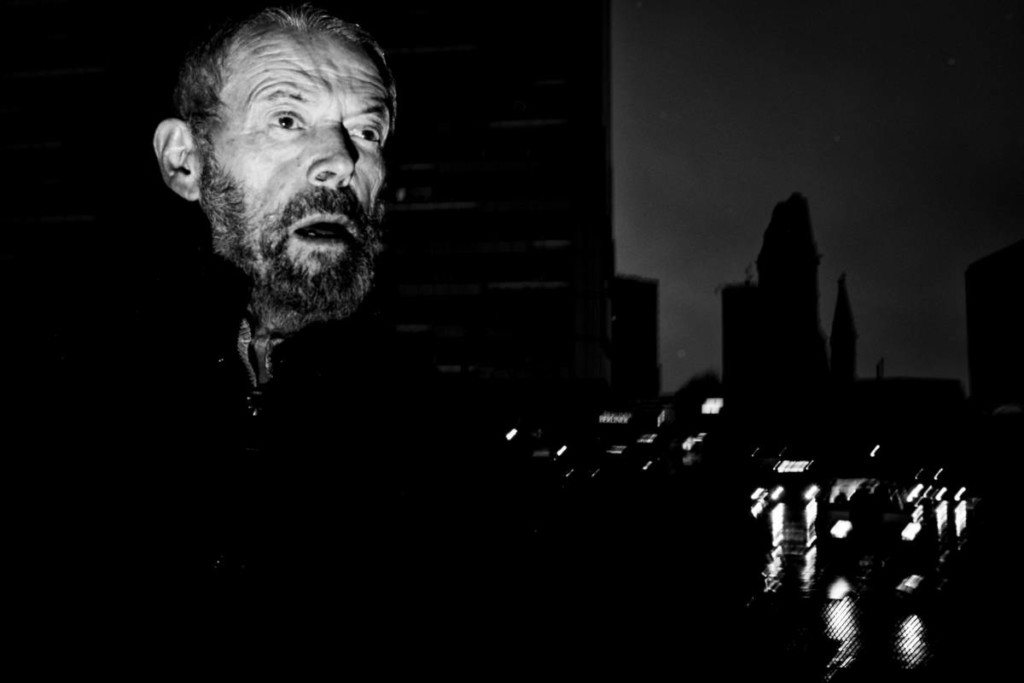
Fuji X100F settings for Street Photography
Personally, I like to shoot in manual mode with the ISO set to 100 most of the time. During the day this shouldn’t be a problem. If the pictures are too dark you can raise the exposure level in post-processing anyway. The benefit of the low ISO at first is, that you avoid burned out lights and grain.
For the focus, I like to either use the pre-focus set to maybe 2 meters or the spot af. The advantage of the pre-focus technique is that I can take pictures very quickly without having to wait until the auto-focus has found the right distance. On the other hand, if I am working with a very shallow depth of field, for example when experimenting with an open aperture then I like to use the spot af. Mostly, I set the auto-focus point in the middle, aim at the spot I want to focus on, press the shutter half-way and then frame the image accordingly.
The shutter speed is usually around 1/100th to 1/200th of a second, depending on the available light, with an aperture around f 5,6.
These are the best settings for the FujiX100F that I found for my type of Street Photography.
Maybe you will be happier using the P-Mode and setting manual limits to the ISO and shutter speed, but I like to have more control over the image and adjust it in post-processing.
These settings for the FujiX100F give me enough freedom to work with the image afterward in any direction I like to.
The Design
For Street Photography the Design of a camera is more than just the simple appear but provides important features. As already mentioned, the Fuji X100F has a very classic look, especially in the silver colored model. This makes people usually more comfortable around the camera than big DSLR rigs which can be quite intimidating. In Street Photography this means that you are able to get closer and catch candid moments more easily.
Concerning the Usability there a few improvements compared to the earlier X100 series. Buttons on the back got re-arranged to allow a one-hand control of the settings.
In contrast to that, there are a few design decisions that defy the controllability with one-hand. For a regular user this might not be really a disadvantage, but as a Street Photographer who uses an off-camera flash a lot of times, I would be really happy if I could control the camera completely with only one hand. In practice, this affects the f-stop setting and the ISO dial.
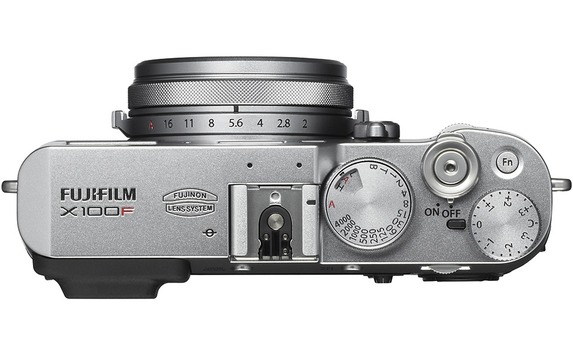
The f-stop can only be changed (as I am aware of) via the ring on the lens and not through software settings like you are able with the RicohGr. Secondly, when you use a flash the remote does block the ISO dial. Since you need to pull the dial to change the ISO like in old analog cameras, this becomes obstructed when adding a flash. Not that it becomes impossible to change the ISO, but it is quite an effort and a little fiddling, that becomes very unhandy in hectic situations.
For my everyday use those both points are not a really a disadvantage since I use the same settings most of the time, or use a semi-auto mode, but if you like to experiment with the camera settings a lot, this might be a little disadvantage.
Nonetheless, I quite like the design, arrangements of buttons and the software menu. It wasn’t hard to get used to the new system and is very intuitive.
Is it worth the change?
Fuji X100F vs X100S
I never used the X100S extensively myself, but fellow photographers from the Berlin1020 group were very satisfied with the X100S. Therefore it is questionable if a transition to the X100F will be useful if you already own the X100S. From the technical aspects despite the sensor, not much has changed. If you like the softer look of the X100S then there is not really a need for change, but the new sensor is a little sharper since it doesn’t use an anti-aliasing filter anymore.
Other than that the X100F is advertised with new picture styles, which if you shoot in RAW is useless anyway. For a price of 1.500$ upgrading to the Fuji X100F is a really tough decision and probably overpriced at the moment if you already own an X100S.
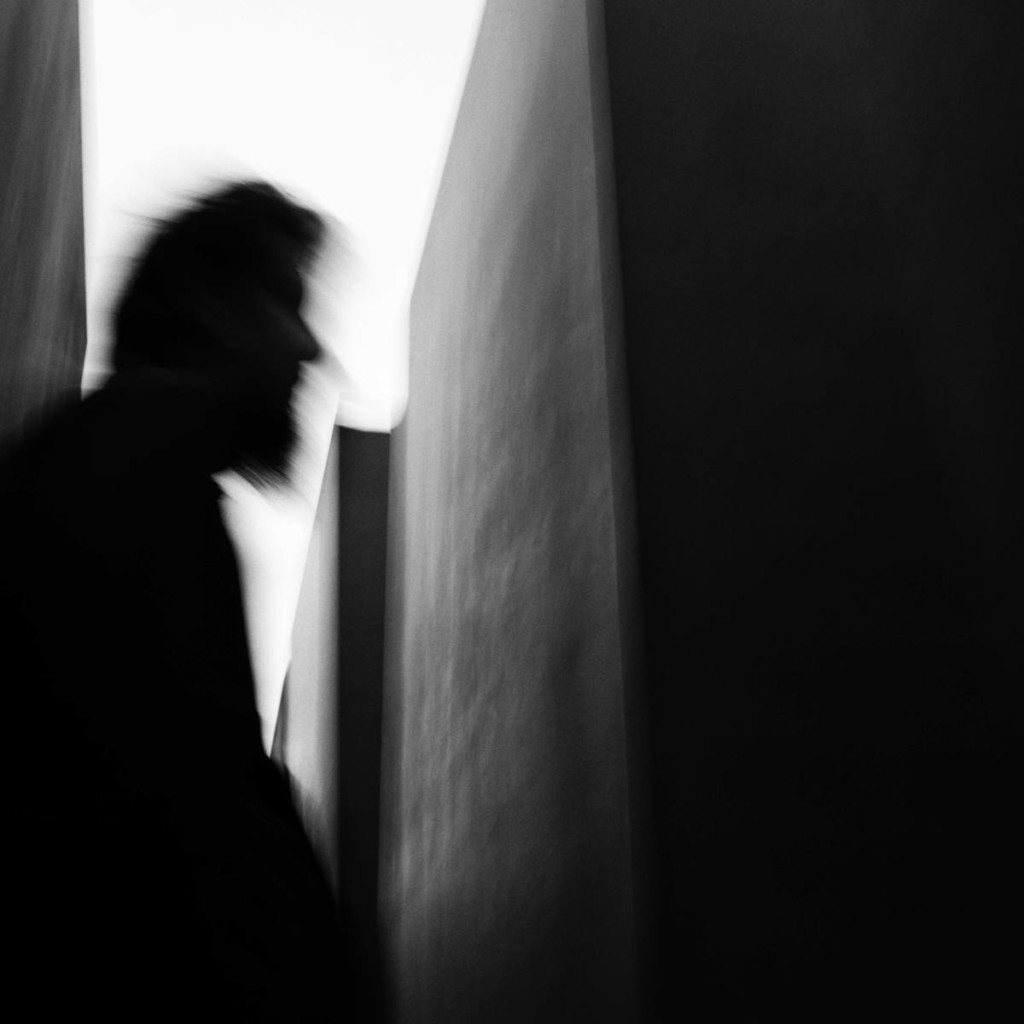
Conclusion
The X100F is a great piece of camera ideal for Street Photographers. It is light and compact but produces images of professional quality. With manual focus, there is practically no shutter lag and the burst-mode is very fluent. In low light situations, the autofocus gets a bit problematic, which is a known error that every camera shares. Unfortunately, nothing has changed in this department.
Due to its design, the camera doesn’t appear too professional and you are able to go unnoticed on the street without looking like a paparazzi with a big DSLR, while basically still getting the same image quality. It isn’t fully controllable with one hand, which is a little disadvantageous for Off-camera flash users. Otherwise, the button layout has improved compared to the previous version and the menu is very intuitive.
Switching from the RicohGr didn’t take me a long time. After one or two strolls, I am able to get the same amount of pictures in focus and getting used to the 35mm lens is very natural since it’s more comparable to our human field of view.
For longer days I still like to use the RicohGr since the Fuji X100F isn’t really made to wear as a “wrist camera” and get’s a little heavy after a few hours. Other than that the X100F is a great option for every Street Photographer.
In addition to the camera, I’d advise you to buy a new strap since the default one is very uncomfortable and very air impermeable which means you will sweat really fast with this strap around your neck. I got a new strap that fits perfectly with the Fuji X100F from the guys over at SoulOfStreet.
If you are searching for a new camera that is specifically made for Street & Documentary work, I definitely recommend the X100F and wish you all the best.
Should you have some questions regarding the camera feel free to ask.
Sample Images of the FujiX100F
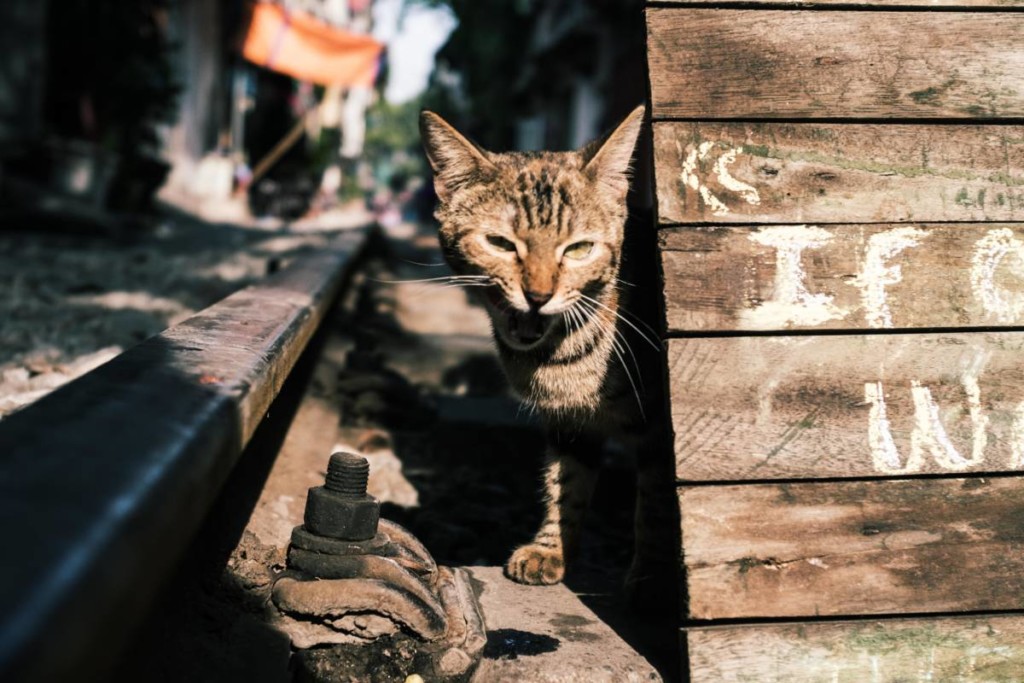
Great Depth-of-Field although it is a 35mm Fuji lens. Wide open it is still sharp without any losses and the background creates a nice and smooth bokeh.
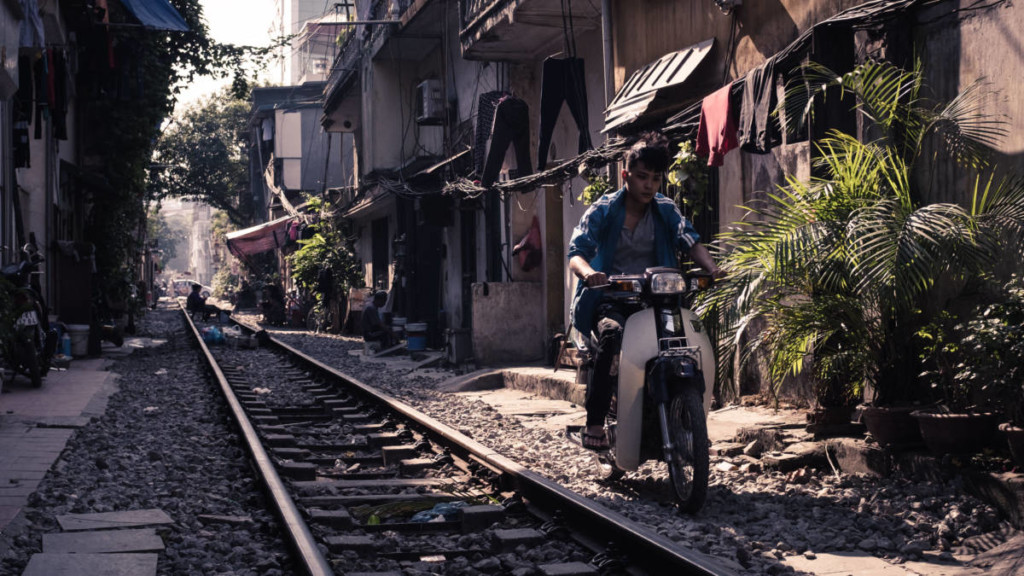
Even in small Alleys with difficult light conditions, the FujiX100F is a top-contender for image quality.

The last Fujifilm X100F sample Image has been shot in the strong light of Hanoi.
Even against the sun, there isn’t any loss of detail in the shadows and if you like to do so, you could raise the blacks to your personal preference level.
License
Features
Features
Templates
PRO
Excellent Image Quality
Great Design
Relatively Compact
CONTRA
No Tiltable Screen
- 24.3MP X Trans CMOS III APS C sensor with no low pass filter and X Processor Pro
- 8 way focus lever plus the number of focusing points has been expanded from 49 in previous models to 91 (up to 325 points)
- Built in ISO dial, incorporated into the shutter speed dial and operating temperature is 0 degree Celsius to 40 degree Celsius (+32 degree Fahrenheit to +104 degree Fahrenheit); Operating Humidity: 10 to 80 percent (no condensation)
- AF mode(single / Zone / wide tracking). Hot shoe: Dedicated TTL Flash compatible. Exposure control: TTL 256 zone metering, Multi / Spot / Average / Center Weighted
- New np w126s lithium battery; Focus distance Approx. 10 centimeter Infinity / 3.9 Inches Infinity
